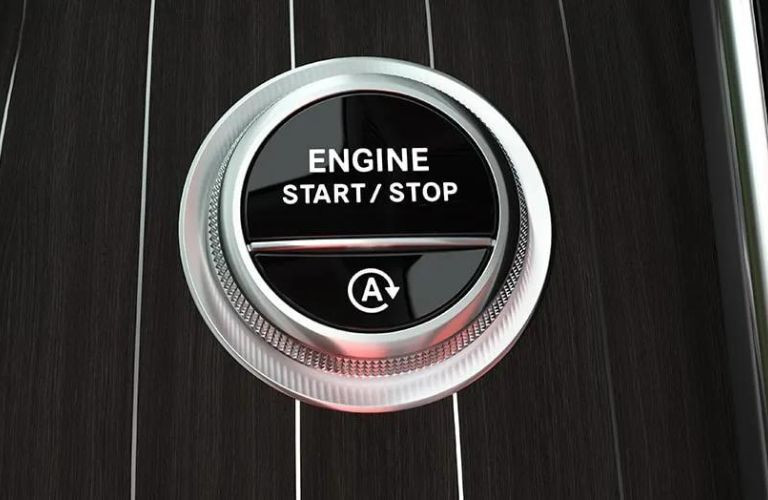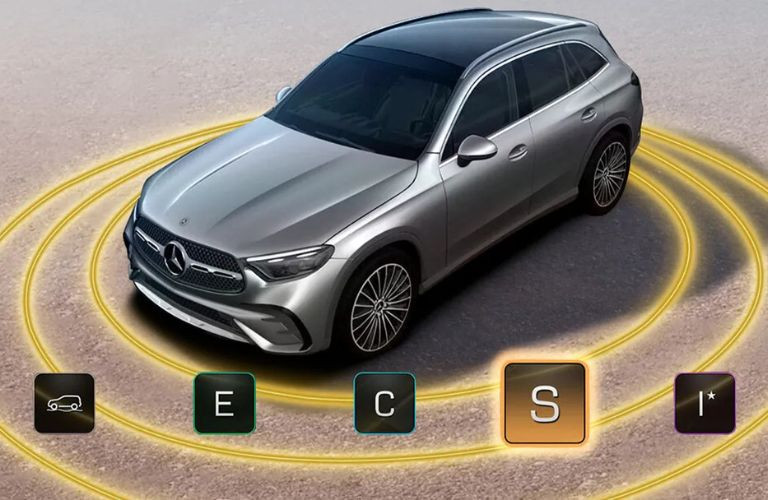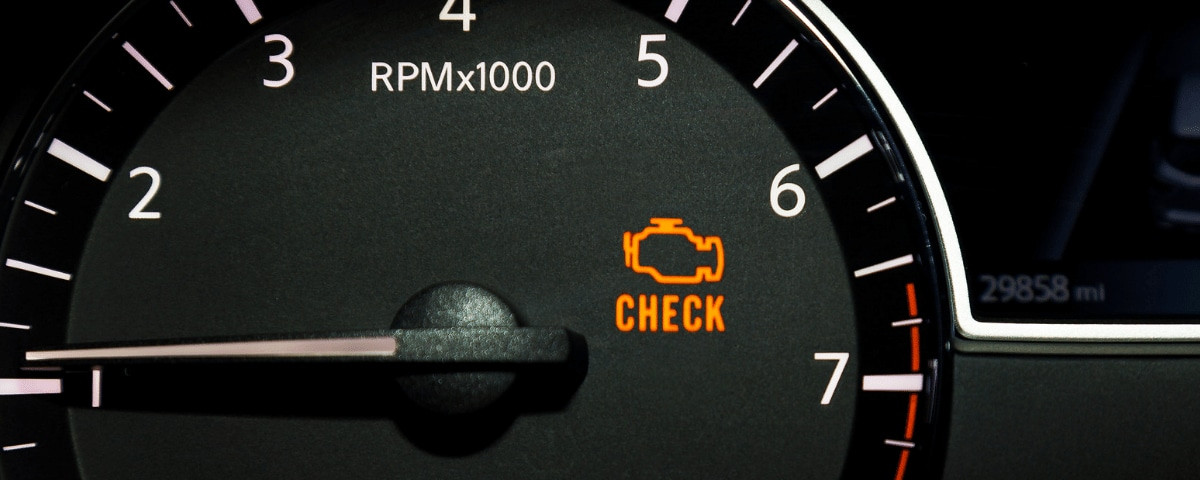Mercedes C300 Eco Mode Not Working: Troubleshooting Guide
The Mercedes C300 Eco mode not working can be frustrating, especially when you’re aiming for better fuel efficiency. At CARDIAGTECH.NET, we understand the importance of a smoothly functioning Eco mode for your driving experience. Let’s explore potential causes and effective solutions to get your Mercedes C300 back to its optimal Eco-friendly performance, focusing on diagnostic tools and techniques to ensure a precise and lasting fix.
1. Understanding Mercedes C300 Eco Mode
The Eco mode in your Mercedes C300 is designed to optimize fuel consumption by adjusting engine and transmission settings. This system aims to reduce emissions and enhance efficiency during normal driving conditions.
1.1. How Eco Mode Works
Eco mode typically achieves fuel savings through several mechanisms:
- Throttle Response: Reduces the sensitivity of the accelerator pedal, encouraging smoother acceleration.
- Shift Points: Adjusts the automatic transmission’s shift points to keep the engine at lower RPMs.
- Start/Stop System: Automatically shuts off the engine when the vehicle is stationary (e.g., at traffic lights) and restarts it when you release the brake pedal.
- Climate Control: Modifies the operation of the air conditioning system to reduce energy consumption.
1.2. Benefits of Eco Mode
Engaging Eco mode can offer several advantages:
- Improved Fuel Efficiency: Reduces fuel consumption, saving you money on gas.
- Lower Emissions: Decreases the amount of pollutants released into the atmosphere.
- Smoother Driving Experience: Provides a more relaxed and controlled driving feel.
2. Common Reasons Why Eco Mode May Not Function
Several factors can prevent the Eco mode from functioning correctly in your Mercedes C300. Identifying the root cause is crucial for effective troubleshooting.
2.1. Battery Issues
A weak or faulty battery is a frequent culprit. The Eco start/stop system relies on sufficient battery power to restart the engine quickly and reliably.
- Insufficient Charge: If the battery doesn’t have enough charge, the system may disable Eco mode to preserve power for essential functions.
- Battery Age: As batteries age, their capacity diminishes, making it harder to maintain the necessary charge level.
- Faulty Battery Sensor: A malfunctioning battery sensor can provide inaccurate readings, preventing the Eco mode from engaging.
2.2. Engine Temperature
The engine must reach a certain operating temperature for Eco mode to activate.
- Cold Engine: If the engine is too cold, the system will remain inactive to ensure proper engine lubrication and reduce wear.
- Faulty Thermostat: A thermostat that’s stuck open can prevent the engine from reaching the required temperature.
2.3. Ambient Temperature
Extreme ambient temperatures can also affect Eco mode functionality.
- High Temperatures: In hot weather, the system may prioritize cooling the engine and cabin, disabling Eco mode to maximize air conditioning performance.
- Low Temperatures: In cold weather, the system may need to keep the engine running to provide adequate heat and prevent freezing.
2.4. Air Conditioning Usage
Heavy air conditioning use can place a significant load on the engine, potentially deactivating Eco mode.
- High AC Demand: If the air conditioning is set to a very low temperature or running at high fan speeds, the system may disable Eco mode to ensure passenger comfort.
2.5. System Faults and Sensor Issues
Various system faults and sensor problems can disrupt Eco mode operation.
- Crankshaft Position Sensor: A faulty crankshaft position sensor can prevent the engine from restarting quickly, leading to Eco mode deactivation.
- Mass Air Flow (MAF) Sensor: An inaccurate MAF sensor reading can affect engine performance and disable Eco mode.
- Oxygen (O2) Sensors: Malfunctioning O2 sensors can disrupt the engine’s air-fuel mixture, preventing Eco mode activation.
2.6. Diagnostic Trouble Codes (DTCs)
The presence of certain diagnostic trouble codes (DTCs) can indicate underlying issues that affect Eco mode.
- OBD-II Scanner: Using an OBD-II scanner can reveal stored DTCs that provide valuable clues about the problem.
- Common DTCs: Examples include codes related to the battery, engine temperature, sensors, and air conditioning system.
2.7. Driving Conditions
Certain driving conditions can temporarily disable Eco mode.
- Hill Climbing: The system may deactivate on steep inclines to provide more power.
- Aggressive Acceleration: Rapid acceleration can override Eco mode to deliver maximum performance.
2.8. Software and Programming Issues
In some cases, software glitches or incorrect programming can cause Eco mode malfunctions.
- Software Updates: Ensure your vehicle has the latest software updates from Mercedes-Benz.
- Module Programming: Incorrect programming of engine control modules (ECMs) or transmission control modules (TCMs) can affect Eco mode operation.
3. Step-by-Step Troubleshooting Guide
Follow these steps to diagnose and resolve Eco mode issues in your Mercedes C300.
3.1. Initial Checks
Before diving into more complex diagnostics, perform these basic checks:
- Battery Condition: Check the battery voltage and condition. A fully charged battery should read around 12.6 volts.
- Engine Temperature: Ensure the engine reaches normal operating temperature. Use a temperature gauge or scan tool to monitor the engine coolant temperature.
- Ambient Temperature: Consider the ambient temperature. Extreme conditions may temporarily disable Eco mode.
3.2. Using an OBD-II Scanner
An OBD-II scanner is an invaluable tool for diagnosing Eco mode problems.
- Connect the Scanner: Plug the scanner into the OBD-II port, usually located under the dashboard.
- Read Diagnostic Trouble Codes (DTCs): Identify any stored DTCs and research their meaning.
- Clear Codes (If Appropriate): After addressing the underlying issues, clear the DTCs and see if the Eco mode starts working again.
3.3. Battery Diagnostics
If you suspect battery issues, perform these additional tests:
- Load Test: A load test assesses the battery’s ability to deliver power under load.
- Battery Sensor Check: Use a multimeter or scan tool to check the battery sensor’s functionality.
3.4. Sensor Inspections
Inspect the following sensors for proper operation:
- Crankshaft Position Sensor: Check for damage or loose connections.
- Mass Air Flow (MAF) Sensor: Clean the MAF sensor with a specialized cleaner.
- Oxygen (O2) Sensors: Monitor O2 sensor readings using a scan tool to ensure they are within the normal range.
3.5. Climate Control System Check
Verify that the climate control system is functioning correctly.
- AC Performance: Check the air conditioning’s cooling performance.
- Refrigerant Level: Ensure the refrigerant level is adequate.
3.6. Software Updates
Check for available software updates from Mercedes-Benz.
- Dealership Visit: Visit your local Mercedes-Benz dealership to inquire about software updates.
- Online Resources: Check the Mercedes-Benz website for software update information.
3.7. Professional Diagnostic Services
If you’re unable to diagnose the issue yourself, seek professional help.
- Certified Technicians: Consult with certified Mercedes-Benz technicians.
- Specialized Equipment: Professional shops have advanced diagnostic equipment to pinpoint the problem.
4. Advanced Troubleshooting Techniques
For more complex issues, consider these advanced troubleshooting techniques.
4.1. Data Logging
Data logging involves recording sensor data while driving to identify anomalies.
- Scan Tool with Data Logging: Use a scan tool with data logging capabilities.
- Monitor Relevant Parameters: Monitor parameters such as engine temperature, battery voltage, sensor readings, and air conditioning performance.
4.2. Component Testing
Component testing involves testing individual components to verify their functionality.
- Multimeter: Use a multimeter to check the resistance, voltage, and continuity of various components.
- Oscilloscope: An oscilloscope can be used to analyze sensor waveforms.
4.3. Wiring and Connection Inspections
Inspect the wiring and connections related to the Eco mode system.
- Visual Inspection: Look for damaged or corroded wires and connectors.
- Continuity Testing: Use a multimeter to check the continuity of wiring circuits.
5. Solutions to Common Eco Mode Problems
Here are some solutions to common Eco mode issues in your Mercedes C300.
5.1. Battery Replacement
If the battery is weak or faulty, replace it with a new one.
- Proper Battery Type: Ensure you use the correct battery type for your vehicle.
- Professional Installation: Consider having the battery installed by a professional to ensure proper connections and programming.
5.2. Sensor Replacement
Replace any faulty sensors identified during the diagnostic process.
- OEM Parts: Use original equipment manufacturer (OEM) parts for optimal performance and reliability.
- Proper Installation: Follow the manufacturer’s instructions for proper installation.
5.3. Software Updates and Module Programming
Update the vehicle’s software and reprogram any necessary modules.
- Dealership Services: This is typically done by a Mercedes-Benz dealership.
- Specialized Shops: Some independent shops have the equipment and expertise to perform software updates and module programming.
5.4. Air Conditioning System Repair
Repair any issues with the air conditioning system, such as leaks or compressor problems.
- Leak Detection: Use a leak detector to find refrigerant leaks.
- Compressor Replacement: Replace a faulty compressor with a new or remanufactured unit.
5.5. Wiring Repair
Repair any damaged or corroded wiring.
- Wiring Repair Kits: Use wiring repair kits to splice and repair damaged wires.
- Professional Wiring Services: Consider hiring a professional for complex wiring repairs.
6. Maintaining Eco Mode Performance
Follow these tips to keep your Mercedes C300’s Eco mode functioning properly.
6.1. Regular Battery Maintenance
Keep the battery in good condition with regular maintenance.
- Battery Terminal Cleaning: Clean the battery terminals regularly to prevent corrosion.
- Battery Charging: Use a battery charger to maintain the battery’s charge level, especially during periods of infrequent use.
6.2. Routine Vehicle Inspections
Schedule routine vehicle inspections to catch potential problems early.
- Professional Inspections: Have your vehicle inspected by a certified technician.
- Fluid Checks: Regularly check and top off fluids such as engine oil, coolant, and brake fluid.
6.3. Proper Driving Habits
Adopt proper driving habits to maximize fuel efficiency and Eco mode performance.
- Smooth Acceleration: Avoid aggressive acceleration and braking.
- Consistent Speed: Maintain a consistent speed on the highway.
6.4. Stay Updated on Software Updates
Keep your vehicle’s software up to date to ensure optimal performance.
- Dealership Notifications: Sign up for notifications from your local Mercedes-Benz dealership to stay informed about software updates.
- Online Resources: Check the Mercedes-Benz website for software update information.
7. Understanding Diagnostic Tools from CARDIAGTECH.NET
At CARDIAGTECH.NET, we offer a range of diagnostic tools to help you troubleshoot and maintain your Mercedes C300’s Eco mode.
7.1. OBD-II Scanners
Our OBD-II scanners provide comprehensive diagnostic information.
- Real-time Data: Access real-time sensor data to monitor engine performance.
- DTC Reading and Clearing: Read and clear diagnostic trouble codes (DTCs).
- User-Friendly Interface: Our scanners feature intuitive interfaces for easy navigation.
7.2. Battery Testers
Ensure your battery is in top condition with our battery testers.
- Load Testing: Perform load tests to assess battery performance under load.
- Voltage Measurement: Measure battery voltage to check its charge level.
- State of Health (SOH) Analysis: Determine the battery’s overall health.
7.3. Multimeters
Our multimeters are essential tools for electrical testing.
- Voltage, Current, and Resistance Measurement: Measure voltage, current, and resistance in electrical circuits.
- Continuity Testing: Check the continuity of wiring circuits.
- Diode Testing: Test diodes for proper operation.
7.4. Sensor Testers
Verify sensor functionality with our sensor testers.
- MAF Sensor Testing: Test mass air flow (MAF) sensors.
- O2 Sensor Testing: Test oxygen (O2) sensors.
- Crankshaft Position Sensor Testing: Test crankshaft position sensors.
7.5. Diagnostic Software
Our diagnostic software provides advanced troubleshooting capabilities.
- Data Logging: Record sensor data while driving to identify anomalies.
- Component Testing: Test individual components to verify their functionality.
- Module Programming: Reprogram engine control modules (ECMs) and transmission control modules (TCMs).
8. Case Studies: Real-World Examples
Here are a few case studies illustrating common Eco mode problems and their solutions.
8.1. Case Study 1: Battery Issues
- Problem: A Mercedes C300’s Eco mode stopped working, and the owner noticed the start/stop system was also inactive.
- Diagnosis: An OBD-II scan revealed a low voltage code. A battery load test confirmed the battery was weak.
- Solution: The battery was replaced with a new one, and the Eco mode functionality was restored.
8.2. Case Study 2: Sensor Problems
- Problem: A Mercedes C300’s Eco mode was intermittent, and the engine seemed to run rough at times.
- Diagnosis: An OBD-II scan revealed a code related to the mass air flow (MAF) sensor.
- Solution: The MAF sensor was replaced, and the Eco mode started working consistently.
8.3. Case Study 3: Software Glitches
- Problem: A Mercedes C300’s Eco mode suddenly stopped working without any apparent reason.
- Diagnosis: A visit to the dealership revealed that a software update was available.
- Solution: The software was updated, and the Eco mode functionality was restored.
9. How CARDIAGTECH.NET Can Assist You
At CARDIAGTECH.NET, we’re committed to providing top-quality diagnostic tools and support for your automotive needs.
9.1. Expert Advice
Our team of experienced technicians is available to provide expert advice and guidance.
- Troubleshooting Assistance: Get help diagnosing Eco mode problems.
- Tool Selection: Find the right diagnostic tools for your needs.
- Technical Support: Receive technical support for our products.
9.2. Wide Range of Products
We offer a comprehensive range of diagnostic tools and equipment.
- OBD-II Scanners: Choose from a variety of OBD-II scanners with different features and capabilities.
- Battery Testers: Ensure your battery is in top condition with our battery testers.
- Multimeters: Our multimeters are essential tools for electrical testing.
- Sensor Testers: Verify sensor functionality with our sensor testers.
- Diagnostic Software: Our diagnostic software provides advanced troubleshooting capabilities.
9.3. Competitive Pricing
We offer competitive pricing on all our products.
- Affordable Solutions: Get high-quality diagnostic tools at affordable prices.
- Value for Money: Our products provide excellent value for money.
9.4. Fast Shipping
We offer fast shipping on all orders.
- Quick Delivery: Get your diagnostic tools quickly.
- Reliable Shipping: We use reliable shipping methods to ensure your order arrives safely.
9.5. Customer Satisfaction
Your satisfaction is our top priority.
- Excellent Customer Service: We provide excellent customer service.
- Satisfaction Guarantee: We offer a satisfaction guarantee on all our products.
10. Legal and Ethical Considerations
When diagnosing and repairing Eco mode issues, it’s important to consider legal and ethical aspects.
10.1. Environmental Regulations
Be aware of environmental regulations related to vehicle emissions.
- Emissions Testing: Ensure your vehicle passes emissions tests.
- Tampering Laws: Avoid tampering with emissions control systems.
10.2. Warranty Issues
Understand how repairs may affect your vehicle’s warranty.
- Warranty Coverage: Check your warranty coverage before performing repairs.
- Authorized Service: Consider using authorized service centers to maintain warranty coverage.
10.3. Safety Precautions
Take necessary safety precautions when working on your vehicle.
- Personal Protective Equipment (PPE): Wear appropriate PPE, such as gloves and safety glasses.
- Vehicle Stabilization: Ensure the vehicle is properly stabilized before working underneath it.
- Electrical Safety: Disconnect the battery before working on electrical components.
11. Frequently Asked Questions (FAQs)
Q1: What does Eco mode do in a Mercedes C300?
Eco mode optimizes fuel consumption by adjusting engine and transmission settings, reducing throttle response, and modifying shift points.
Q2: Why is my Mercedes C300 Eco mode not working?
Common reasons include battery issues, engine temperature, ambient temperature, air conditioning usage, system faults, and diagnostic trouble codes (DTCs).
Q3: How can I diagnose Eco mode problems?
Use an OBD-II scanner to read diagnostic trouble codes (DTCs), check the battery condition, inspect sensors, and verify the climate control system.
Q4: What tools do I need to troubleshoot Eco mode issues?
Essential tools include an OBD-II scanner, battery tester, multimeter, sensor tester, and diagnostic software. CARDIAGTECH.NET offers a wide range of these tools.
Q5: Can a weak battery affect Eco mode?
Yes, a weak or faulty battery is a frequent cause of Eco mode problems.
Q6: How do I fix a faulty sensor?
Replace any faulty sensors identified during the diagnostic process with OEM parts for optimal performance and reliability.
Q7: Should I update my vehicle’s software?
Yes, keeping your vehicle’s software up to date ensures optimal performance and may resolve Eco mode issues.
Q8: Can I repair Eco mode problems myself?
Simple issues, such as a weak battery or faulty sensor, can be repaired yourself. However, complex problems may require professional assistance.
Q9: How can CARDIAGTECH.NET help me?
CARDIAGTECH.NET offers expert advice, a wide range of diagnostic tools, competitive pricing, fast shipping, and excellent customer satisfaction.
Q10: What are the legal and ethical considerations when repairing Eco mode issues?
Be aware of environmental regulations, warranty issues, and safety precautions when working on your vehicle.
12. Final Thoughts
Troubleshooting a Mercedes C300’s Eco mode requires a systematic approach, starting with basic checks and progressing to more advanced diagnostics. By understanding the common causes and following our step-by-step guide, you can effectively diagnose and resolve Eco mode issues. Remember to consider legal and ethical aspects, and always prioritize safety. For reliable diagnostic tools and expert support, turn to CARDIAGTECH.NET.
Do you need assistance diagnosing or repairing your Mercedes C300’s Eco mode? Contact CARDIAGTECH.NET today for expert advice and the best diagnostic tools available! Reach us at 276 Reock St, City of Orange, NJ 07050, United States, or call us on Whatsapp at +1 (641) 206-8880. Visit our website at CARDIAGTECH.NET for more information.





